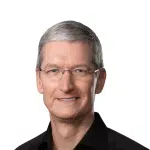Apple’s new M5-powered Vision Pro is more than an upgraded headset — it’s a symbol of the company’s evolving global strategy. The model, launching on September 22, is now assembled in Vietnam. This marks the first time the Vision Pro has been produced outside of China.
Although Apple still manufactures most iPhones in China, the Vision Pro’s smaller production volume makes it ideal for testing operations elsewhere. Packaging on the updated device confirms that assembly now takes place in Vietnam, reflecting a deliberate move toward diversification.

Navigating Trade and Tariff Challenges
Apple’s manufacturing shift comes after years of navigating trade tensions and tariffs. During Donald Trump’s first term, Apple faced threats of a 25% tariff on Chinese imports. CEO Tim Cook’s diplomacy helped the company avoid major penalties. However, the second Trump administration revived tariff concerns, pushing Apple to rethink its strategy.
The COVID-19 pandemic further exposed Apple’s dependence on Chinese factories, halting production for months. In response, Apple began distributing its manufacturing network across Asia to reduce risk. Yet, the company remains cautious. Moving too quickly could damage long-standing partnerships with Chinese suppliers.
Vietnam’s Rising Role in Apple’s Future
Vietnam’s inclusion in Apple’s manufacturing ecosystem isn’t new. The country already produces AirPods and other accessories. Its skilled workforce and improved infrastructure make it a strong choice for Apple’s next wave of production.
Analysts view the move as a long-term safeguard against trade disruptions. Apple’s expansion into India — which created more than 350,000 jobs — shows that diversification can strengthen both resilience and growth.
Reports suggest Apple plans to continue manufacturing future products in Vietnam, including its upcoming Home Hub in early 2026. With these steps, Apple is quietly reshaping its supply chain to balance innovation, security, and stability for years to come.












